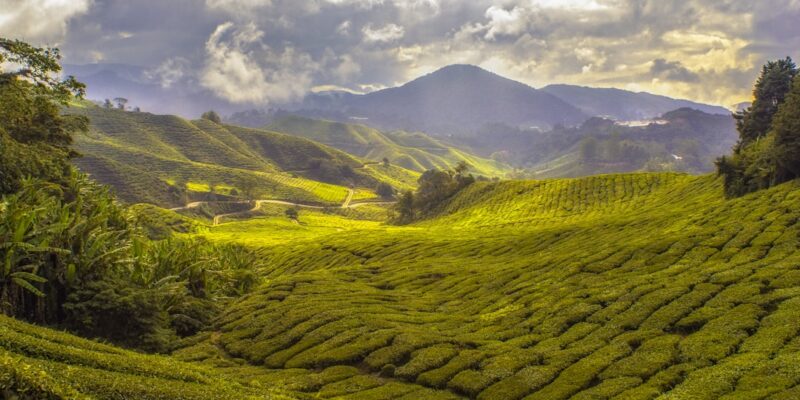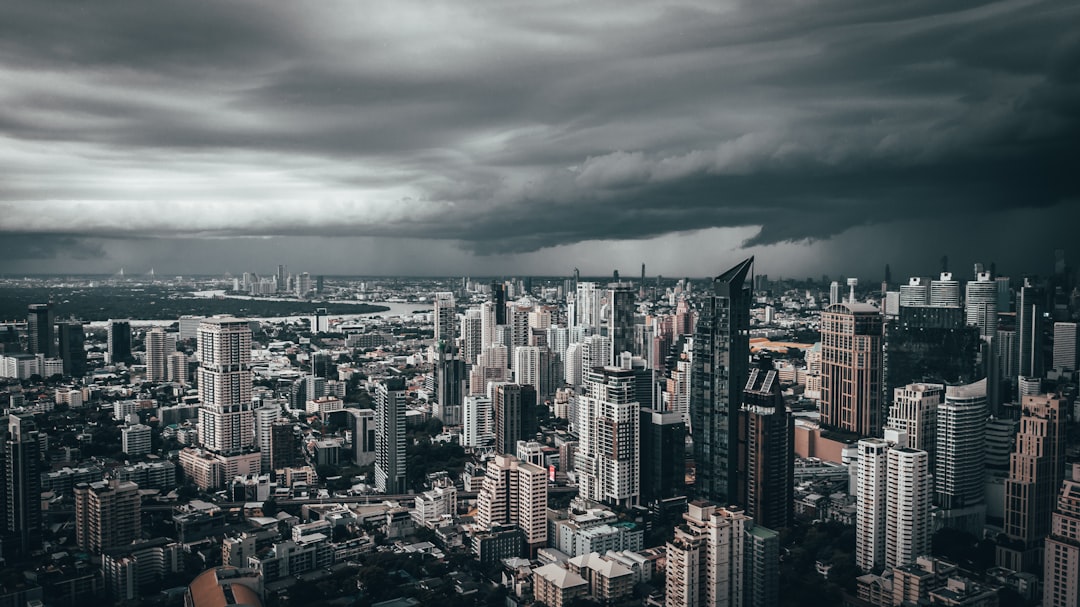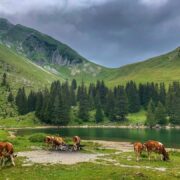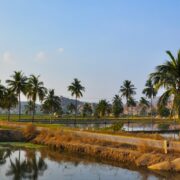
Exploring Sri Lanka’s Tea Plantations: An Unforgettable Experience
Sri Lanka, formerly known as Ceylon, is renowned for its tea plantations that stretch across the lush green hills of the central highlands. The country’s tea industry is one of the largest in the world and plays a significant role in both its culture and economy. Tea production in Sri Lanka dates back to the 19th century when the British introduced tea plants to the island. Since then, Sri Lanka has become famous for its high-quality teas, known for their unique flavors and aromas.
Tea is deeply ingrained in Sri Lankan culture and is an integral part of daily life. It is not only a popular beverage but also a symbol of hospitality and warmth. Sri Lankans take great pride in their tea industry and consider it a national treasure. The tea plantations not only provide employment opportunities for thousands of people but also contribute significantly to the country’s economy through exports.
Key Takeaways
- Sri Lanka is known for its tea plantations, which produce some of the world’s finest teas.
- Tea was introduced to Sri Lanka by the British in the 19th century and has since become a major industry in the country.
- Tea is grown and harvested year-round in Sri Lanka, with the best time to visit the plantations being from December to March.
- Some of the top tea plantations to visit in Sri Lanka include the Pedro Tea Estate, the Mackwoods Labookellie Tea Centre, and the Bluefield Tea Gardens.
- Tea tasting and pairing is a popular activity in Sri Lanka, with many tea estates offering guided tours and tastings.
The History of Tea in Sri Lanka
Tea was first introduced to Sri Lanka by James Taylor, a British planter, in the mid-19th century. Taylor planted tea seeds brought from Assam, India, in the region of Kandy, which is now known as the heartland of Sri Lanka’s tea industry. The cool climate and fertile soil of the central highlands proved to be ideal for growing tea, and soon, more plantations were established across the region.
The impact of tea on Sri Lanka’s economy and society was profound. The British colonial government encouraged tea cultivation as a means to replace coffee plantations that were devastated by a fungal disease. Tea quickly became a lucrative cash crop, and Sri Lanka became one of the largest exporters of tea in the world.
Over time, the tea industry evolved, with new techniques and technologies being introduced to improve productivity and quality. Today, Sri Lanka produces a wide variety of teas, including black, green, white, and oolong teas. The country’s teas are known for their distinct flavors and are highly sought after by tea connoisseurs around the world.
The Process of Growing and Harvesting Tea
Tea cultivation in Sri Lanka follows a meticulous process that involves several stages. It begins with the preparation of the land, where the soil is plowed and fertilized to create the ideal conditions for tea plants to thrive. The tea plants are then carefully planted in rows, and regular maintenance is carried out to ensure their healthy growth.
The different types of tea grown in Sri Lanka include black tea, green tea, white tea, and oolong tea. Each type requires specific growing conditions and processing methods. Black tea is the most common type produced in Sri Lanka and undergoes a process called oxidation, where the leaves are withered, rolled, fermented, and dried. Green tea, on the other hand, is not oxidized and is made by steaming or pan-frying the leaves to preserve their natural color and flavor.
Tea pluckers play a crucial role in the tea industry. These skilled workers carefully handpick the tender leaves from the tea bushes, ensuring that only the top two leaves and a bud are harvested. The plucked leaves are then transported to processing factories where they undergo further processing to transform them into the final product.
The Best Time to Visit the Tea Plantations
| Month | Average Temperature (°C) | Rainfall (mm) | Peak Season |
|---|---|---|---|
| January | 18 | 50 | No |
| February | 18 | 70 | No |
| March | 19 | 100 | No |
| April | 20 | 150 | No |
| May | 21 | 200 | No |
| June | 22 | 250 | No |
| July | 22 | 300 | No |
| August | 22 | 300 | No |
| September | 22 | 250 | No |
| October | 21 | 200 | Yes |
| November | 20 | 150 | Yes |
| December | 19 | 100 | No |
The best time to visit Sri Lanka’s tea plantations is during the dry season, which typically runs from December to March. During this time, the weather is pleasant with clear skies and lower chances of rainfall. The cool temperatures of the central highlands make it an ideal escape from the heat of the coastal areas.
When planning a visit to the tea plantations, it is essential to consider weather conditions. The central highlands experience cooler temperatures compared to other parts of Sri Lanka, so it is advisable to pack warm clothing, especially if visiting during the winter months. It is also important to check the weather forecast before your trip and be prepared for sudden changes in weather, as the highlands are known for their unpredictable climate.
The Top Tea Plantations to Visit in Sri Lanka
Sri Lanka is home to several tea plantations that offer visitors a chance to experience the beauty and charm of the tea estates. Some of the most popular tea plantations to visit include:
1. Nuwara Eliya: Known as the “Little England” of Sri Lanka, Nuwara Eliya is famous for its picturesque tea plantations. The town’s colonial architecture and cool climate add to its charm, making it a favorite destination for both locals and tourists.
2. Ella: Located in the central highlands, Ella is a small town surrounded by tea plantations and breathtaking views. The area is known for its scenic hikes, waterfalls, and tea factories where visitors can learn about the tea-making process.
3. Haputale: Situated at an elevation of 1,431 meters above sea level, Haputale offers stunning panoramic views of the surrounding tea estates. The area is also known for its biodiversity, with several nature reserves and bird-watching spots.
Tea Tasting and Pairing in Sri Lanka
Tea tasting is an art form in Sri Lanka, and there are several places where visitors can experience this unique cultural activity. Tea tasting involves sipping different varieties of teas and appreciating their flavors, aromas, and textures. It is a sensory experience that allows you to explore the nuances of each tea.
In Sri Lanka, tea is often paired with traditional cuisine to enhance the dining experience. Some popular tea pairings include savory snacks like “short eats” (bite-sized pastries) or sweet treats like “hoppers” (a type of pancake) and “kiribath” (milk rice). The combination of tea and food creates a harmonious balance of flavors and is a delightful way to immerse yourself in Sri Lankan culture.
There are several places in Sri Lanka where you can experience tea tasting. Many tea estates offer guided tours that include a visit to their factories, where you can witness the tea-making process firsthand. These tours often end with a tea tasting session, where you can sample a variety of teas and learn about their unique characteristics.
The Cultural Significance of Tea in Sri Lanka
Tea holds great cultural significance in Sri Lanka and is deeply ingrained in the country’s customs and traditions. Sri Lankans are known for their hospitality, and offering a cup of tea to guests is considered a gesture of warmth and welcome. Tea is also an integral part of religious ceremonies and social gatherings, where it is served as a symbol of unity and togetherness.
Tea has played a significant role in shaping Sri Lankan history and identity. The tea industry provided employment opportunities for thousands of people, helping to alleviate poverty and improve living standards. It also contributed to the country’s economic growth and development, making Sri Lanka one of the largest exporters of tea in the world.
Wildlife and Scenic Views in the Tea Plantations
Sri Lanka’s tea plantations are not only known for their scenic beauty but also for their rich biodiversity. The lush green hills are home to a variety of flora and fauna, making it a paradise for nature lovers and wildlife enthusiasts.
The tea estates provide habitat for several species of birds, including endemic species like the Sri Lanka white-eye and the Sri Lanka blue magpie. Visitors can enjoy bird-watching tours or simply sit back and listen to the melodious songs of the birds while sipping a cup of tea.
The surrounding landscapes of the tea plantations are equally captivating, with rolling hills, cascading waterfalls, and mist-covered mountains. The panoramic views from the tea estates are truly breathtaking, offering a sense of tranquility and serenity.
Sustainable Tea Production in Sri Lanka
Sustainable tea production is of utmost importance in Sri Lanka to ensure the long-term viability of the industry and protect the environment. The country’s tea industry has taken several initiatives to promote sustainability, including organic farming practices, water conservation, and waste management.
Many tea estates in Sri Lanka have adopted organic farming methods, which eliminate the use of synthetic fertilizers and pesticides. This not only helps to preserve the natural ecosystem but also produces teas that are free from harmful chemicals.
Water conservation is another key aspect of sustainable tea production. Sri Lanka’s tea plantations rely on water sources for irrigation, and efforts are made to minimize water usage through efficient irrigation systems and rainwater harvesting.
Waste management is also a priority in the tea industry. Tea factories have implemented measures to reduce waste generation and recycle or reuse materials whenever possible. This includes composting tea waste and using it as organic fertilizer for the tea plants.
Tips for Planning Your Tea Plantation Experience in Sri Lanka
When planning a trip to Sri Lanka’s tea plantations, there are a few practical tips to keep in mind:
1. Accommodations: There are several hotels and guesthouses located near the tea plantations that offer comfortable accommodations. It is advisable to book in advance, especially during peak tourist seasons.
2. Transportation: The most convenient way to explore the tea plantations is by hiring a private vehicle or joining a guided tour. Public transportation options are limited in some areas, so it is best to plan your transportation in advance.
3. Must-try experiences: Apart from visiting the tea plantations and factories, there are several other activities you can enjoy during your trip. These include hiking through the tea estates, visiting waterfalls, and exploring nearby attractions like botanical gardens and temples.
In conclusion, Sri Lanka’s tea plantations offer a unique and immersive experience for visitors. From the rich history and cultural significance of tea to the breathtaking landscapes and wildlife, there is something for everyone to enjoy. Whether you are a tea enthusiast or simply looking to escape into nature, a visit to Sri Lanka’s tea plantations is sure to leave you with lasting memories.
FAQs
What is a tea plantation?
A tea plantation is an agricultural estate where tea is grown and harvested for commercial purposes.
Where are tea plantations located in Sri Lanka?
Tea plantations are located in the central highlands of Sri Lanka, primarily in the districts of Nuwara Eliya, Kandy, and Ella.
What is the best time to visit tea plantations in Sri Lanka?
The best time to visit tea plantations in Sri Lanka is during the dry season, which runs from December to March.
What is the process of tea production in Sri Lanka?
The process of tea production in Sri Lanka involves plucking the tea leaves, withering them, rolling them, fermenting them, and then drying them.
What are the benefits of visiting tea plantations in Sri Lanka?
Visiting tea plantations in Sri Lanka allows visitors to learn about the history and culture of tea production in the country, as well as to witness the stunning natural beauty of the central highlands.
What are some popular tea plantations to visit in Sri Lanka?
Some popular tea plantations to visit in Sri Lanka include the Pedro Tea Estate, the Mackwoods Labookellie Tea Centre, and the Damro Labookellie Tea Centre.



















Your point of view caught my eye and was very interesting. Thanks. I have a question for you.